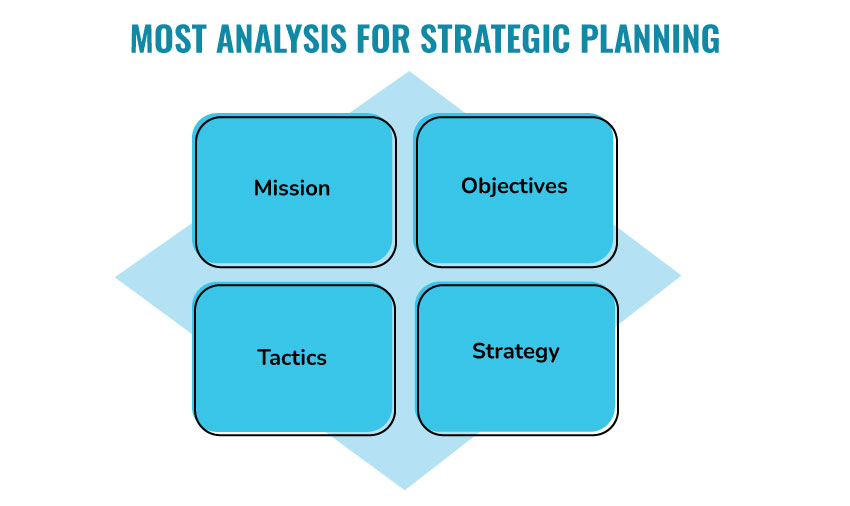Table of Content
Introduction to MOST Analysis
The MOST Analysis is one of the important strategic planning tools which helps to assess an organization’s mission, objectives, and business strategies. The organization can be used to analyze what the organization wants to achieve and how the organization can achieve its business goals. The use of these strategic planning tools considers the organization’s mission, objectives, strategies, and tactics with the aim to improve the organization's competitive position. The use of this strategic analysis tool helps to improve the internal business processes and company culture.
The need for the MOST Analysis tool
The key question that might be coming to your mind is “How MOST Analysis can help in strategic planning”? The MOST Analysis focuses on the organization’s mission and objectives which helps to effectively plan the organization’s strategies. The MOST Analysis turns the organization’s vision into reality by developing realistic and achievable business goals.
It is a powerful tool that helps to set clear targets for every individual in the organization which helps to improve the overall success of the organization. By conducting MOST Analysis, the organization keeps its strategies justified and relevant enough to achieve the set goals. In addition, the MOST Analysis also helps to prevent the risk of unclear objectives, ineffective action plans, poor strategic implementation, etc. This model is mainly implemented to bring alignment in the business operations and to provide a strong sense of direction across all levels.

How to apply the MOST Analysis?
The manner in which this tool can be used might look very simple. However, this is also not that simple. So, How MOST Analysis can be undertaken? The following list of steps provides an answer to this question.
Mission
The first step in using the MOST Analysis is to determine the organization’s mission which must be the overall reason for running the organization. Thus, while defining the organization’s mission, the individual needs to think broadly of what the organization wants to achieve in the long run.
Objectives
MOST Analysis starts with the definition of the organization’s mission but setting up organizational missions does not provide any benefits. Thus, the second step involves setting up organizational objectives which include the goals by which the success of the organization’s actions can be measured.
Strategy
Creating business strategies is the process of setting up long-term plans to achieve specific goals. To list out the business strategies, a formal document needs to be prepared which can provide strategic direction to various individuals in the team.
Tactics
Now, you must be thinking that in the third step, the strategies or long-term plans to achieve the business objectives are already defined. Then, what are tactics? The strategies and tactics are different concepts and in the MOST Analysis, we also need to define the tactics for achieving the business goals. The tactics are the low-level specific actions that can help to carry out the strategies and achieve organizational goals.
Example of MOST Analysis
MOST Analysis can be applied to various businesses to reach their business objectives. Let us consider the Coca-Cola Most Analysis to provide you with a brief insight on the real application of MOST Analysis.
| MOST Analysis | Strategic initiatives of Coca-Cola |
|---|---|
| Mission | “To refresh the world in mind, body, and spirit, to inspire moments of optimism and happiness through our brands and actions, and to create value and make a difference.” |
| Objectives | The main objective of Coca-Cola is to effectively run the business at a global level and to accelerate sustainable growth. The main objectives of Coca-Cola are listed as follows-
|
| Strategies | To achieve its business goals, Coca-Cola has implemented diverse strategies including strong and effective partnerships with all the bottling partners, developing high-quality beverages, implementing CSR initiatives and policies, unique products, word of mouth advertising, etc. |
| Tactics | Besides focusing on the business strategies, Coca-Cola also has implemented various tactics to achieve its business goals. The tactical plans of Coca-Cola include product testing initiatives, introducing new products, extensive advertising, etc. Further to offering a wide range of products to the customers, Coca-Cola has engaged in various production, distribution, and manufacturing agreements. Coca-Cola’s agreement with Dr. Pepper beverage brands also enables the company to manufacture certain Dr. Pepper products which also helps to improve the overall brand reputation of the organization. Under its tactical plan, the company also has launched several innovative brands such as Sprite Ginger, Coke energy, Cherry vanilla, etc. which helps to achieve its goal of higher customer satisfaction and organizational profitability. Besides this, the company also focuses on different sustainability initiatives and programs to ensure compliance with the triple bottom line approach and to ensure higher stakeholder satisfaction. |